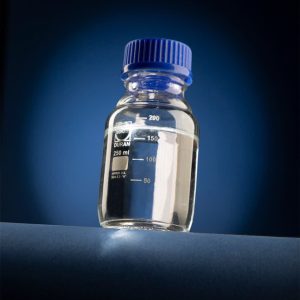membrane cleaner
Membrane detergents are materials. which are used on the membrane to remove deposits and blockages.
In membrane-based water purification systems, sediments are formed. It can be on membranes. create many problems for water operators.
Reverse osmosis (RO), nano filtration (NF), ultra filtration (UF) and micro filtration (MF) systems
All water treatment technologies are membrane-based and therefore prone to sedimentation. Clogging of the membranes can
It can lead to problems such as a decrease in production water flow and an increase in energy consumption, and even replacement of expensive equipment, including membrane filters.
Indications
This product is specifically for water purification devices that work based on the reverse osmosis process.
And they have formulated membranes. But due to the nature of being harmless
, it is for other parts of the device, such as sand and silica filters, as well as in devices based on cation exchange
They act to harden water, it can be used to remove fat and congestion.
Types of membrane detergents
Membrane acid detergents
Acid washing materials are used to remove mineral deposits including iron. When using acidic detergents, it should be noted that due to the presence of calcium sulfate deposits, sulfuric acid should not be used to wash the membrane.
Membrane alkaline detergents
Alkaline cleaning materials are used to remove organic deposits, including biological materials.
Membrane washing operation steps (CIP)
Membrane washing is done in several steps:
Pumping with slow flow: In this step, we drain the water inside the pressure vessel, for this purpose, we introduce a flow with a low flow into the system to drain the water inside the pressure vessel.
Sediment soaking: Turn off the pump and allow the membranes to be completely soaked in the washing solution. Usually, this step takes about an hour, but if the level of clogging is high, this step may take 10 to 15 hours. . Use slow rotation to maintain a high temperature during this period.
Pumping with high flow: In this step, the washing operation is performed with the maximum flow, which takes about 30 to 60 minutes. The high speed and pressure at this stage causes the sediments to be removed from the membrane. and be separated.
Final washing: at this stage, it is recommended to use the produced water of the RO system or distilled water to wash the detergent solution. Avoid introducing feed water or water from the pre-treatment stage into the system at this stage because it may be contaminated. Components It reacts with the detergent solution and leads to the formation of deposits on the membranes. The minimum temperature of this stage is 20 degrees Celsius.
Membrane washing time (CIP operation)
When should we wash the membranes of the reverse osmosis system?
Membrane cleaning (CIP) is an important part of reverse osmosis system installation and operation.
And the membranes of the RO system after some time are damaged by the pollutants that stick to their surface or deposit.
They get infected and this weakens the performance of the system. For this reason, the system needs periodic washing.
To improve the efficiency of the cleaning process, the elements must be cleaned before the clogging is completely established. If the washing is delayed for a long time, it will be difficult or impossible to completely remove the deposits from the surfaces of the membranes and provide full performance. Therefore, if you are looking to clean a membrane-based water purification system, you should thoroughly check the signs of clogging before choosing a detergent. when. The following signs appear in the system. The members must be washed:
Reducing the amount of water produced by 10-15%
The pressure difference between the inlet and outlet of the membranes is more than 3 times
Increase in TDS of produced water by 10%





